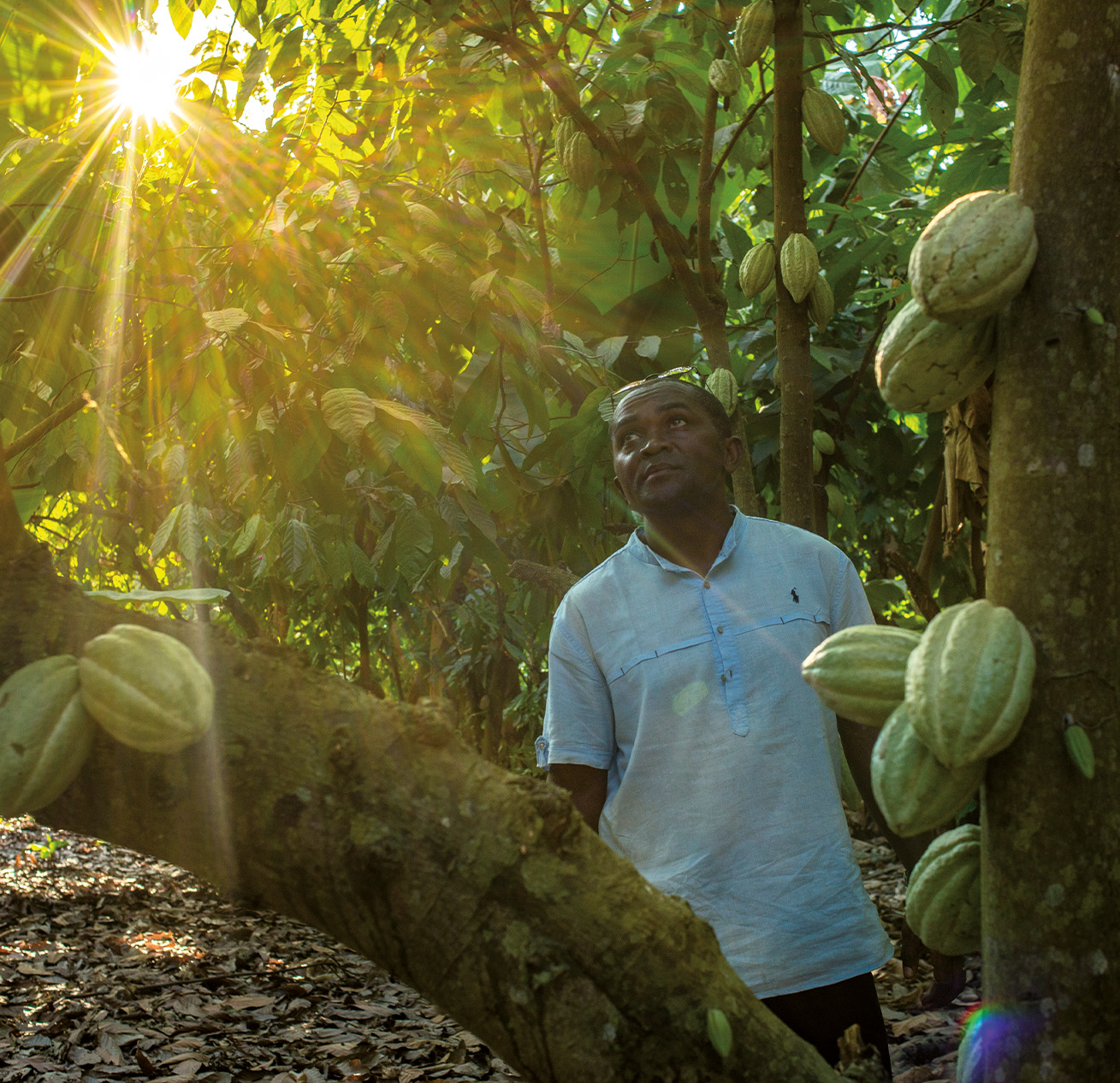
A CACAO
responsible
We take great pride in producing chocolate of impeccable quality. When choosing our chocolate couverture supplier, we selected an organization that shares our vision and best practices.
This allows us to guarantee fair working conditions, as well as respect for natural resources in the cocoa-growing regions.
Maintaining close and transparent relationships with local partners is made possible through regular visits to the planting and harvesting sites.
By committing to long-term partnerships, they also ensure a source of income for future generations of planters and producers, a key factor for our House.

From bean to bar
a know-how
From the hands of the cocoa farmer to our workshops in Geneva, we handle this raw material with the utmost precision it deserves. As true enthusiasts, we place great importance on the meticulous care given to each step of the production chain and ensure that this is always respected. This respect extends to the selection of products that will be added to our recipes.
The sugar and dairy products are exclusively of Swiss origin. In some cases (particularly for organic sugar), the beets may come from Germany due to availability issues. However, it is still produced in Switzerland, which is why it can be called “Swiss sugar”.
We use hay milk produced in the UNESCO biosphere of Entlebuch in Lucerne. In this farm, biodiversity is balanced with sustainable farming.
Vanilla comes from three cooperatives in the Mananara Biosphere Reserve in Madagascar. The humid tropical climate and the traditional know-how of the local population provide the ideal conditions for growing Bourbon vanilla.
The cocoa butter, a key element in the production of our coatings, has been purified and deodorized to meet our high-quality standards.



The bean
transformation
To transform cocoa beans into chocolate, patience is required! First, the beans are treated with hot steam at 127 degrees to clean them.
Once ready, they are slowly roasted in small batches. The temperature and duration of the roasting depend on the different varieties of beans as well as the recipe. Once the beans have cooled, we pass them through a crusher, where they are repeatedly ground and separated from their shells.
Next, they go through a mixer to combine the cocoa mass with liquid cocoa butter, sugar, and, depending on the recipe, Madagascar vanilla.
Of course, for milk chocolate, the process is the same, except that cream or powdered milk is added. The final and essential step to achieve smoothness and creaminess: tempering.
The chocolate is slowly heated to bring out its delicate aromas. This step can take up to 72 hours!




